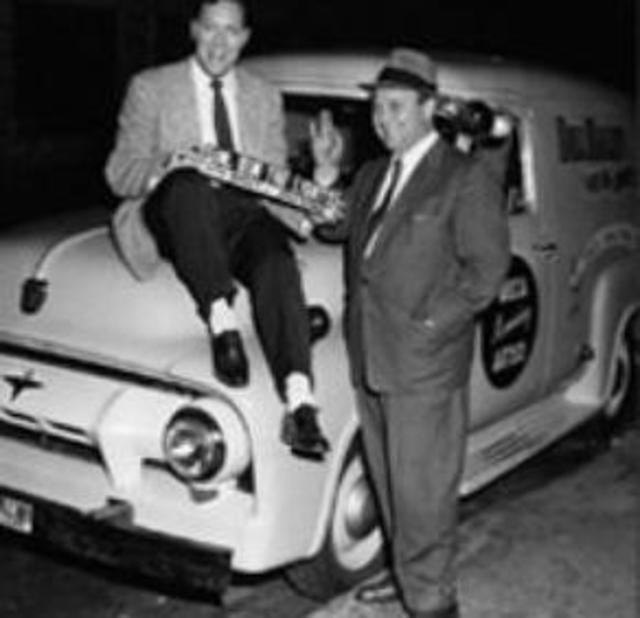Milt Gabler

Not only was Milt Gabler present at the birth of rock and roll, but in a sense he also helped deliver it by virtue of having produced such founding fathers as Louis Jordan and Bill Haley. On top of that, Gabler also produced records for the likes of Billie Holiday, Peggy Lee, Ella Fitzgerald, Sister Rosetta Tharpe, the Weavers, the Ink Spots and Louis Armstrong. From jazz to rhythm & blues to gospel to folk to rock and roll, Gabler was a force in popular music for much of the 20th century. But his imprint has been felt most strongly in the world of jazz, where he carved out multiple niches as a music retailer, label founder, club impresario and record producer.Milt Gabler was born on May 20, 1911, in Harlem, New York. In 1926, Gabler began working in his father's Manhattan radio shop across from the Commodore Hotel on East 42nd Street. He soon began stocking jazz records in the store, and eventually the Commodore Music Shop became the leading jazz retailer in New York City. In 1935, Gabler started his own specialty label, the United Hot Club of America, and began releasing 78 rpm records that other labels had rejected. He then created another label, Commodore Records, and began producing his own records.In 1937, Gabler opened a new store on 52nd Street. Billie Holiday was one of his regular customers. When her label, Columbia Records, refused to issue her song "Strange Fruit," Gabler released it on Commodore. He was soon overseeing many historic recording sessions. And, in 1940, he began orchestrating weekly jam sessions involving some of jazz's greatest luminaries at Jimmy Ryan's, which was also located on 52nd Street.In 1941, Gabler was hired by the Decca label as an A&R man, and it was there that he began working with performers across the spectrum of popular music. In terms of his impact on rock and roll, Gabler produced some of Louis Jordan's hottest jump-blues sides from the Forties, including "Caldonia" and "Choo Choo Ch'Boogie." These uptempo R&B records served as blueprints for the sides Gabler later cut with Bill Haley in the Fifties. "All the tricks I used with Louis Jordan, I used with Bill Haley," Gabler later said. "The only difference was the way we did the rhythm. On Jordan, we used a perfectly balanced rhythm section from the Swing era... but Bill had the heavy backbeat." In other words, rhythm & blues became rock & roll under Gabler's watchful eye, through a shift in rhythmic emphasis.Throughout the late Fifties and Sixties, Gabler continued to write and produce songs, including Brenda Lee's "I'm Sorry." During the Seventies, he produced several reissue albums for MCA Records. In 1991, he received the Trustees Award from the National Academy of Recording Arts and Sciences, and in 1993, he was inducted into the Rock and Roll Hall of Fame, where Gabler's nephew, the comedian and actor Billy Crystal, inducted him. Milt Gabler died on July 20, 2001. In 2005, Crystal produced a documentary and CD entitled The Milt Gabler Story.